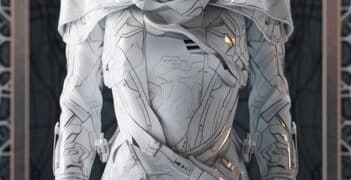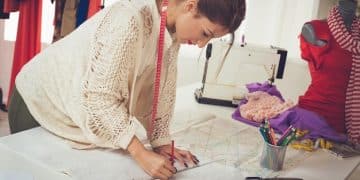DIY Cosplay Weaponry: Build Lightweight, Convention-Safe Props
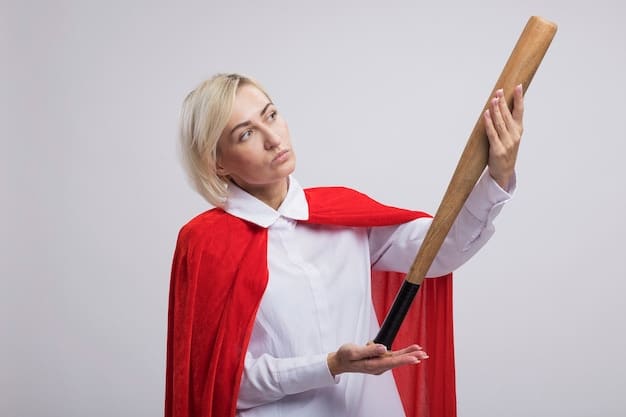
Creating DIY cosplay weaponry involves constructing lightweight and convention-safe props using materials like EVA foam and PVC pipe, ensuring they adhere to specific size and safety regulations for events.
Embark on crafting your own cosplay props without breaking the bank or compromising safety. This guide delves into the world of DIY Cosplay Weaponry: Building Lightweight and Convention-Safe Props, offering practical advice and techniques for creating impressive yet harmless costume accessories.
Understanding Convention Weapon Policies
Before starting any cosplay weapon project, it’s crucial to familiarize yourself with convention weapon policies. These guidelines are in place to ensure the safety and comfort of all attendees. Ignoring them could result in your prop being confiscated or even denial of entry.
Key Aspects of Convention Weapon Policies
Most conventions follow fairly similar rules, but it’s always best to check the specific event’s website or contact their security team directly. Here are some typical restrictions:
- Materials: No real weapons or anything that can be easily mistaken for one. Metal blades, sharp edges, and functional firearms are almost always prohibited.
- Size and Weight: Props must be manageable to carry and pose no hazard to others. Weight limits are often enforced, and excessively long or wide props may be restricted.
- Functionality: No firing projectiles, even Nerf darts. Lasers and bright lights may also be regulated.
- Peace Bonding: Many conventions require props to be “peace bonded,” meaning they are tagged by security to indicate they have been inspected and approved.
Understanding these policies is the first step to ensuring your DIY cosplay weapon is convention-safe and enjoyable to use.
In summary, knowing and respecting convention weapon policies is non-negotiable for any cosplayer. It ensures a safe and fun environment for everyone involved.
Choosing the Right Materials for Lightweight Props
Selecting lightweight but durable materials is key to creating convention-safe cosplay weaponry. The weight of your prop directly impacts your comfort and mobility, which is especially important for long convention days. Furthermore, lightweight materials are generally safer for handling and posing in crowded spaces.
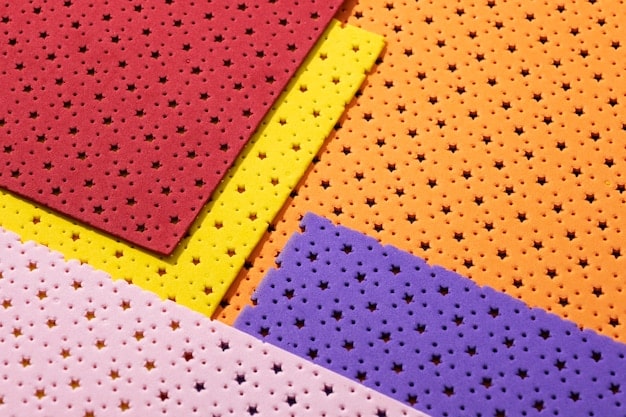
EVA foam and PVC pipes are popular choices due to their versatility and affordability. Let’s explore why these materials are ideal for DIY cosplay weapons:
EVA Foam: The Cosplayer’s Best Friend
Ethylene-vinyl acetate (EVA) foam is a closed-cell foam available in varying thicknesses and densities. It’s lightweight, easy to cut and shape, and can be heat-formed for complex designs. EVA foam is also paintable and can be sealed for durability.
PVC Pipes: Strong and Stable Structures
Polyvinyl chloride (PVC) pipes are rigid, lightweight, and inexpensive. They can be used as the core structure for swords, staffs, or other long weapons, providing stability without adding excessive weight. PVC pipes can be easily cut to size and joined with fittings.
Other Lightweight Material Options:
- Worbla: A thermoplastic material that becomes pliable when heated, allowing for intricate shaping and detailing.
- Cardboard: Economical and easy to source, but less durable than EVA foam or Worbla.
- Foam Clay: Lightweight, air-drying clay that can be used for sculpting details and embellishments.
Choosing the right materials is a crucial step in ensuring your cosplay weapon is both lightweight and convention-safe.
Designing for Safety and Realism
Creating realistic-looking weaponry doesn’t mean sacrificing safety. Smart design choices can effectively bridge the gap between authenticity and harmlessness. When designing your DIY cosplay weapon, consider these factors:
Edgy but Safe: Avoiding Sharp Points
Avoid sharp points or edges on your props. Rounding off the tips of swords or axes can prevent accidental pokes or cuts. Consider using thicker foam or additional layers to cushion any potentially hazardous areas.
Sizing it Right
Keep your weapon’s size manageable. Overly large props can be difficult to maneuver and pose a risk to others in crowded environments. Consider scaling down the dimensions of your weapon to make it more convention-friendly.
Painting and Finishing Techniques
Proper painting and finishing can dramatically enhance the realism of your prop without compromising safety. Use realistic weathering effects to simulate the appearance of wear and tear, but avoid adding any features that could be misconstrued as dangerous.
Careful design choices can significantly enhance the safety of your DIY cosplay weapon without detracting from its aesthetic appeal.
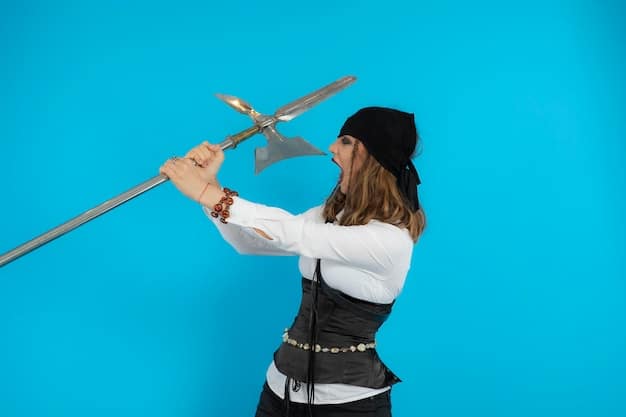
Step-by-Step Guide to Building an EVA Foam Sword
Let’s dive into a practical example: building a basic EVA foam sword. This step-by-step guide covers the essential techniques for creating a lightweight and convention-safe prop.
Materials and Tools You’ll Need:
- EVA foam (various thicknesses)
- PVC pipe (for the core)
- Craft knife or utility knife
- Cutting mat
- Heat gun
- Contact cement or hot glue
- Sandpaper or sanding block
- Primer
- Acrylic paints
- Clear coat sealant
Step 1: Creating the Template
Start by creating a paper template of your sword design. Consider the overall size and shape, and be sure to account for any specific details or embellishments. Transfer the template onto your EVA foam and cut out the basic shape.
Step 2: Shaping and Detailing
Use a heat gun to gently heat and shape the EVA foam. This allows you to create curves and contours. Add additional layers of foam to build up the thickness of the blade and create details like bevels or grooves. Use a craft knife to refine the shapes and edges.
Step 3: Assembling the Sword
Insert the PVC pipe into the core of the sword to provide structural support. Glue the EVA foam pieces together using contact cement or hot glue.
Step 4: Smoothing and Priming
Sand the edges of the foam to create a smooth, uniform surface. Apply a primer to seal the foam and provide a good base for painting.
Step 5: Painting and Sealing
Paint the sword with acrylic paints, using multiple layers to achieve the desired color and finish. Add weathering effects or other details as desired. Finally, apply a clear coat sealant to protect the paint and enhance the durability of the prop.
By following these steps, you can create a lightweight and convention-safe EVA foam sword that is both visually appealing and structurally sound.
Adding Realistic Details and Finishing Touches
The key to any great cosplay prop is in the details. Adding realistic details and finishing touches can take your DIY cosplay weapon from simple to stunning. Here are some tips and techniques for achieving a professional-looking result:
Weathering Techniques
Weathering can add depth and character to your prop, making it look battle-worn and authentic. Techniques like dry brushing, washes, and sponge stippling can create realistic wear and tear effects. Consider using reference images to accurately replicate the appearance of your chosen weapon.
Creating Textures and Patterns
Adding textures and patterns can enhance the visual appeal of your prop. Use tools like dremels, wood burners, or even textured rollers to create unique surface finishes. Experiment with different techniques to achieve the desired effect.
Using Metallic Paints and Finishes
- Metallic Paints: Choose high-quality metallic paints that accurately replicate the appearance of metal.
- Rub ‘n Buff: A wax-based metallic finish that can be applied to raised areas for a realistic sheen.
- Clear Coat: A clear coat sealant that can protect the paint and enhance the durability of the prop.
Adding realistic details and finishing touches can transform your DIY cosplay weapon into a true work of art.
Ensuring Convention Compliance and Safe Handling
While crafting an amazing prop is rewarding, ensuring it is safe and compliant with convention rules is paramount. Here’s how to gear up for a hassle-free convention experience.
Pre-Convention Checks
Before the convention, inspect your prop meticulously. Ensure no sharp edges exist, all parts are securely attached, and it meets size and weight restrictions.
Peace Bonding Process
Understand the peace bonding process at the convention. Be prepared to have your prop inspected and tagged by security personnel. Follow their instructions carefully and answer any questions honestly.
Safe Carrying and Posing Techniques
Practice safe carrying and posing techniques. Be mindful of your surroundings and avoid swinging your prop in crowded areas. Keep a firm grip on your weapon to prevent accidental drops or collisions.
Ultimately, following convention guidelines ensures enjoyment without compromising safety.
| Key Point | Brief Description |
|---|---|
| 🛡️ Convention Policies | Understand and adhere to the specific rules regarding weapon types, size, and safety. |
| 🛠️ Material Selection | Choose lightweight materials like EVA foam and PVC for ease of handling and safety. |
| 📐 Design Considerations | Round off sharp edges and scale down oversized weapons for convention-friendliness. |
| 🛡️ Safety Checks | Always inspect your props before heading to conventions to ensure they comply with all regulations. |
FAQ
▼
EVA foam, PVC pipes, Worbla, and foam clay are excellent lightweight options. EVA foam is especially popular due to its ease of use and versatility in crafting various weapon shapes.
▼
Avoid sharp edges and points, use lightweight materials, and comply with the specific rules of the convention you’re attending. Check the event’s website for any listed policies.
▼
Peace bonding is the process where convention security inspects your prop weapon to ensure it follows all rules. It’s important to comply to show your respect for the event rules and maintain a safe environment.
▼
No, real metal components are generally prohibited at conventions as they can pose a safety risk. Always opt for safer, lightweight alternatives.
▼
Use painting and weathering effects to add depth and realism. Metallic paints, dry brushing, and texture techniques can transform your EVA foam prop into a convincing replica.
Conclusion
Creating DIY cosplay weaponry is a fantastic way to showcase your creativity and dedication. By choosing lightweight materials, paying attention to convention weapon policies, and focusing on safe design, you can craft impressive props that enhance your cosplay experience while keeping everyone safe and comfortable.

